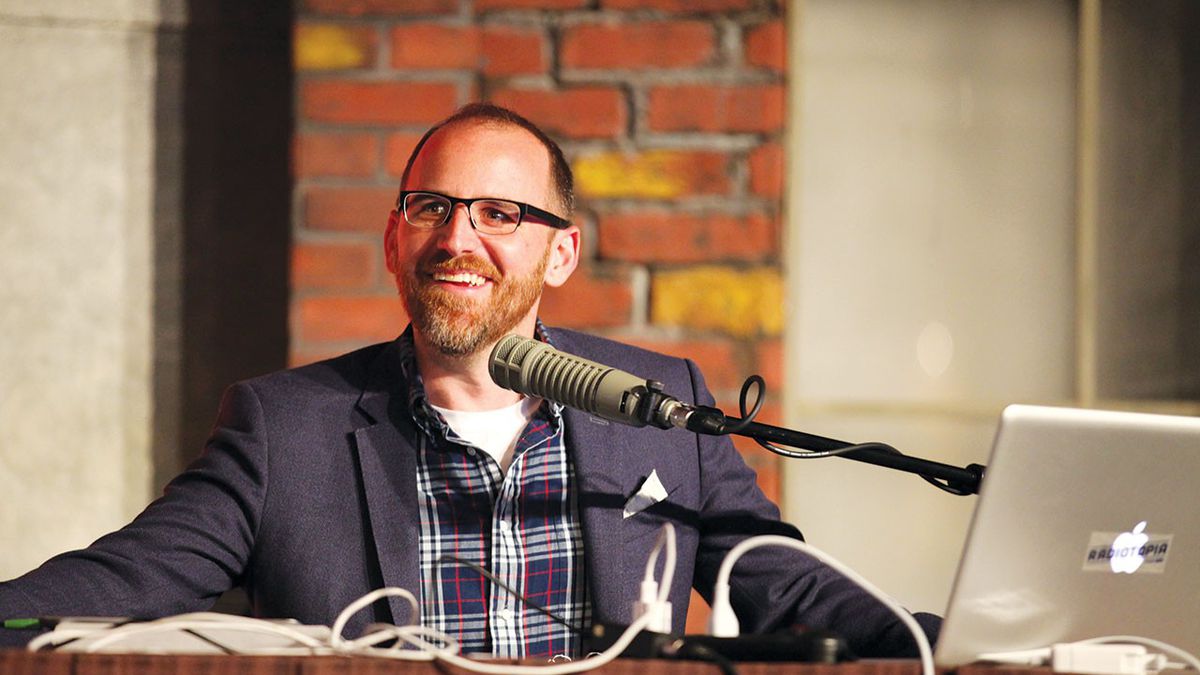Why are manhole covers round? What’s the deal with those colorful inflated tubes that bob and weave from local car dealerships? Who deposited those boulders on Market Street? Where will you find outside ladders for cats?
For 10 years, host/creator Roman Mars has provided answers to these questions and thousands more via the 99% Invisible podcast. Having started at KALW, Mars’ bite-sized reflections on under-appreciated design have expanded in duration and audience reach over the decade.
Mars said, “What I like the most about podcasting is it has a really intimate connection with the audience. What I’ve learned is that it’s a two-way street and that we rely on each other.”
Mars funded the first podcasts through some of Kickstarter’s most successful journalism campaigns, raising $170,000 in the initial foray. Now the venture has 13 employees and millions of regular listeners.
“We treat the concept of design very broadly on the show,” Mars said. For example, Joe Rosenberg recently reported on one woman’s crusade to establish libraries for children and how her distaste for Goodnight, Moon affected the availability of that bedtime classic.
After 400-plus episodes and more than 450 million downloads, the podcast, based in downtown Oakland, has spawned a new book, The 99% Invisible City: A Field Guide to the Hidden World of Everyday Design, already No. 3 on the New York Times Best Seller list.
The 99% Invisible City distills the eye-opening podcast down to its essence. Mars and digital director/co-author Kurt Kohlstedt focus on the cool things we walk right by every day—the inscrutable road signage, the resilient flora and fauna, the buildings under construction and falling into disrepair.
The 99% Invisible City includes entries from around the world—from Osaka’s beautifully decorated manhole covers, to the Mansard roofs of Paris—with plenty of items waiting to be found here in the Bay Area.
The reputations of some Bay Area sites have improved over time. Case in point, the Transamerica Building.
“It was considered a mess of a building by modernists, a really terrible addition to North Beach by preservationists,” Kohlstedt said. “It was truly hated. Then people found its value decades later.”
The book’s black-and-white drawings—provided by illustrator Patrick Vale—contain the perfect balance between realism and abstraction.
The book is more than just a transcription of the podcast and web site, offering new stories and art.
“For example, we talk about cell-phone towers camouflaged to look like trees,” Mars said. “Just the fact that cell phones were named because the coverage areas of the towers, when viewed on a map, looked like cells in a petri dish. It was just delightful to find out something like that, that I’ve never really questioned what the word ‘cell phone’ meant, and for it to have a biological origin was really fun for me.”
By the time the pandemic hit, The 99% Invisible City was mostly finished, but Mars and Kurt Kohlstedt are watching how the disease changes the physical landscape.
“I was surprised by how many ways you can affix plexiglass to something,” Mars said. “I didn’t even know it was possible to erect all this stuff so quickly. It was kind of stunning.”
Although the book doesn’t specifically address Covid-related changes, Kohlstedt suggested that “stories in it become more relevant because we talk about interventions, soft architecture, things like parklets taking over street parking space, providing context for what (people are now) seeing a lot more of.”
Mars and Kohlstedt are also alert to changes in urban design that will be required due to global heating.
Kohlstedt said, “To me, the biggest single thing we could do would be to design greener buildings, reducing power consumption and controlling temperatures in a more passive way to use less energy and output less heat.”
Mars added, “It’s hard to know how much, but a ton of [the built environment] is going to have to change [due to climate change].”
No matter what the future brings, it’s likely that 99% Invisible will be there to point out what the rest of us miss.












